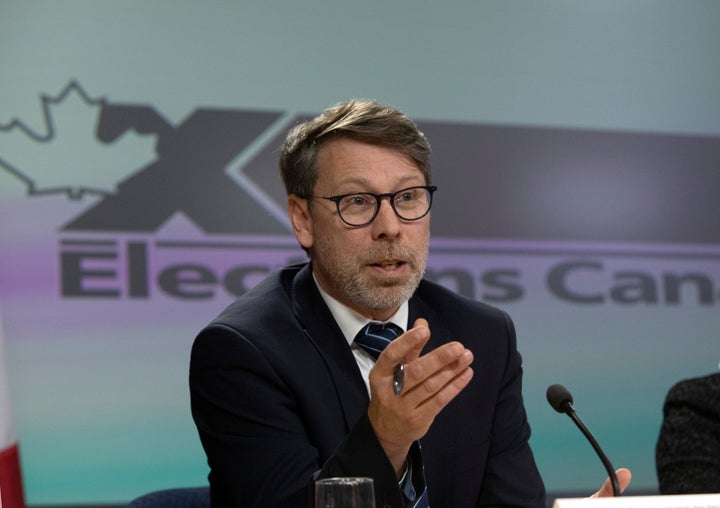
OTTAWA — Elections Canada’s preliminary estimate of the most recent federal election pegs costs at approximately $504 million, despite the 40-day campaign being significantly shorter than the 78-day race in 2015.
The figure is an increase from the $443 million spent four years ago. The independent agency tabled its report to the House of Commons Tuesday, noting the increased budget was accrued over the past four fiscal cycles.
Elections Canada officials told reporters Tuesday that “significant and robust” upgrades to its computer system, made as part of the agency’s effort to protect Canada’s electoral system from cyberattacks, were a major expense. Officials declined to disclose how much upgrades cost.
The report notes there were no significant cyberthreats to fall’s federal election.
Watch: Election day wasn’t without hiccups
Extended hours for advance voting and the costs associated with staffing those polling stations were also factors that drove up expenses in last year’s general election. The expansion of on-campus polling stations also increased expenses. Staffing is the biggest expense, officials said.
The number of registered third parties also went up from 115 four years ago to 147. It’s an increase that’s due to new disclosure requirements under the Liberals’ amendments to the Elections Act.
Before the last election, third parties weren’t bound by Elections Act rules. The changes brought in by the Liberal government require third parties to register with Elections Canada if they spend more than $500 on regulated partisan activities such as advertising.
The changes came into force after the government’s elections reform bill received royal assent in 2018. It made sweeping changes to the Canada Elections Act, including the introduction of a pre-election period with spending limits for partisan activities.
Political parties’ now must operate under a $2.05 million limit for partisan advertising in the three-and-half months leading to an election call. Registered third parties must work under an $1.02-million limit in the same time frame. Parties face financial penalties, including imprisonment, if rules are breached.
The government defended the changes as necessary to ensure a level playing field in the months before and during an election campaign. Opposition parties argued the amendments would tilt the scale in favour of the incumbent Liberals.
One concern raised by the opposition was over fundraising, an area where Conservatives have long held an advantage. In the beginning of the 2019 election year, the Conservatives’ fundraising haul doubled what the Liberals earned in the same period.
Other notable increases
There was an uptick in the number of people who ran in the last election with 2,146 registered candidates, up from 1,792 names on ballots four years ago.
That number was inflated by former Beauce MP Maxime Bernier’s People’s Party running 315 candidates in 338 ridings. Bernier did not win his Quebec seat and all candidates who ran under his party banner across the country were defeated.
One contentious issue that fueled heated debate in the Senate in lead-up to the election was concern over changes to expat voting rules. The government’s elections reform bill extended the right to vote to Canadians living outside of the country, repealing the previous rule that stripped voting rights from those who have been expats for more than five years.
The change prompted a significant boost to the number of Canadians registered on the International Register of Electors from 16,000 four years ago to 55,000.
Despite the marked increase, 34,144 Canadian voters exercised their voting rights from overseas — exceeding the 30,000 figure the Chief Electoral Officer Stéphane Perrault estimated.

According to the report, the bulk of the votes came from the United States (43 per cent), United Kingdom (11 per cent), China and Hong Kong (five per cent), Australia (four per cent), and Germany (four per cent).
More details related to political party and third-party finances have yet to be released. Political parties currently have until Feb. 21 to submit their expenditures to Elections Canada.
Elections Canada’s final report relating to third party and political party activities is expected to be tabled in the fall.
Elections Canada is working to ready itself for the next election as soon as April 2021. Officials told reporters they’re keeping in mind that minority governments typically last 18-24 months while they prepare for the next election.